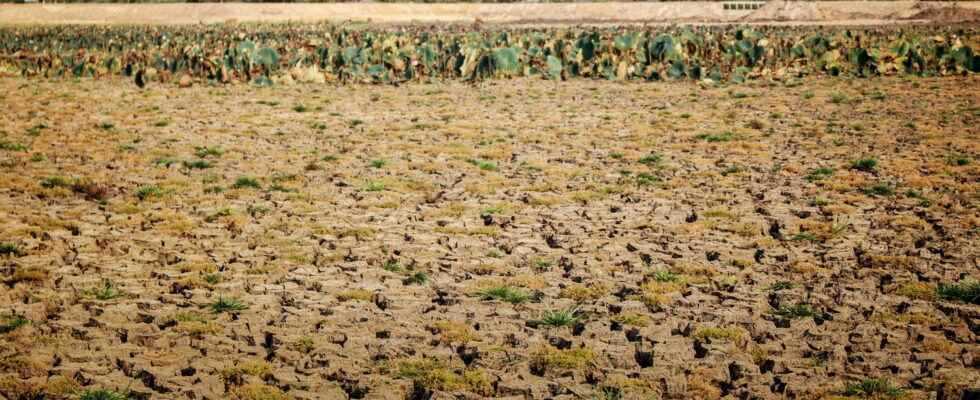DROUGHT. As France experiences its first peak of heat, the soils are drying out due to the lack of rain, and this is starting to worry farmers. Discover the map of the departments on drought alert as well as the restrictions put in place.
[Mis à jour le 16 mai 2022 à 11h20] The first early heat and the lack of rain are drying out the French soils and several departments are on drought alert. This could have an impact on crops, including wheat, and farmers are worried. Last week, the Ministry of Agriculture warned: “Winter crops, such as wheat or barley, which are now in the development phase, are beginning to experience situations that will affect yields. “. He also presides that the drought, the high temperatures and the lack of water will “have an impact on the production of cereals”. After the rise in the price of gasoline and the shortage of sunflower oil, will bread soon be missing from the shelves?
If the high temperatures are not exceptional, they come at the wrong time, after several days of temperatures higher than normal for the season according to Météo France. The soils are already very dry and this peak of heat will not help the situation. To deal with this situation, 15 departments are already on alert with concrete measures put in place for farmers and businesses. Individuals are not left out and must also follow some instructions. Here is all the first info on this 2022 drought.
Which departments are on drought alert 2022? The list
As of May 12, 2022, 15 departments are on alert and are affected by a prefectural decree limiting certain uses of water and 4 departments are on alert. Please note that only certain areas may be affected by these prefectural decrees and not all of them have the same scope. While some areas are on alert (i.e. level 1), others have been placed on alert (level 2), on heightened alert (level 3) or even in crisis (level 4).
- Aïn
- Alpes de Haute Provence
- Bouches du Rhone
- Charente
- Charente Maritime
- Two Sevres
- Drome
- Ille et Vilaine
- Indre
- Loire Atlantique
- Loiret
- Mayenne
- Morbihan
- Vaucluse
- Vendee
- Vienna
What is the drought map of France?
Propluvia is the institute of the Ministry of Ecological Transition responsible for monitoring water levels and the internet platform that allows direct consultation of water restriction orders. The site includes a scalable map to view the areas affected by these prefectural decrees.

What are the different drought alert levels? What are the restrictions?
There are four main levels of drought vigilance and all of them result in the implementation of specific measures.
- Drought vigilance (level 1): informing and encouraging individuals and professionals to save water.
- Alert (level 2): measures prohibiting the operation of valves, nautical activity, prohibition at certain times of watering gardens, green spaces, golf courses or washing one’s car. For farmers, reduction of levies for agricultural purposes below 50% (or ban up to 3 days a week).
- Reinforced alert (level 3): stronger limitation of withdrawals for watering gardens, green spaces, golf courses, car washing, etc., until certain withdrawals are prohibited. For farmers, reduction of levies for agricultural purposes greater than or equal to 50% (or ban greater than or equal to 3.5 days per week).
- Crisis (level 4): cessation of non-priority withdrawals, including withdrawals for agricultural purposes. Only withdrawals to ensure the exercise of priority uses are authorized. They concern sectors such as health, civil security, drinking water and sanitation.
What are the small gestures that can help limit dryness?
Individuals have a role to play in limiting drought, in particular through small daily gestures summarized by the website of the Ministry of Ecological Transition:
- Avoid letting the water run
- Limit the watering of my garden,
- Install water-saving equipment,
- Take a shower instead of a bath
- Install a rainwater collector or containers under the gutter downspouts and in the garden to water it,
- Repair water leaks,
- Avoid running your washing machine or dishwasher half empty.
